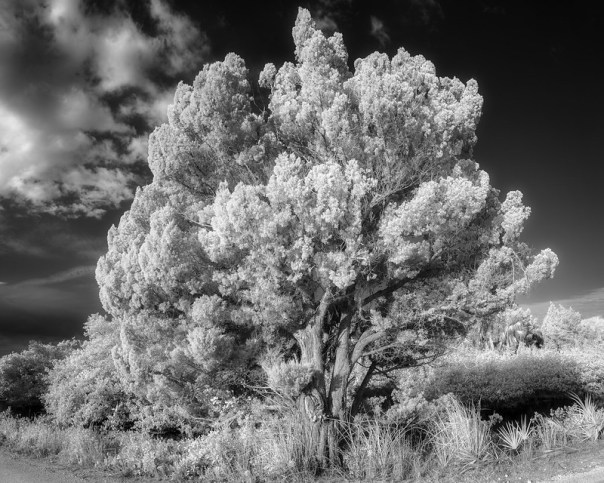Hello loyal readers! This is the next entry in the occasional blog category called “Postcards” where I upload photos of Central Florida scenes – similar to ones you’d find on a postcard.
It’s easy to find all of these. Just use the “Places / Categories” pulldown menu over on the right side of the blog and select “Postcards”. If you’re viewing the site on a phone, you may not see that menu – in that case, just type “postcards” into the search box.
I made this image in April of 2017 from a pontoon boat in Blue Cypress Lake, near Vero Beach, Florida. This wonderful lake is part of the St. Johns River headwaters. Here’s a link to all the posts I’ve written about it: https://edrosack.com/category/photo-ops-in-florida/blue-cypress-lake/. And you can view other photos from there at this link: https://www.flickr.com/photos/edrosack/albums/72157630027829768.
It’s a 2 frame vertical panorama shot with an infrared modified camera, handheld with a 24 mm equivalent lens at f/3.5, ISO 200 at 1/800 sec. I processed the photo and converted it to Black and White using Lightroom and Photoshop. You should be able to click on it to go to Flickr and then select the download symbol below and to the right of the photo. I hope you like it!
Thanks for stopping by and reading my blog. Now – go make some photos!
©2019, Ed Rosack. Creative Commons, Attribution-NonCommercial-ShareAlike 4.0 International license
Note: Items in my blog that are marked with a Creative Commons license are available in high resolution for you to download for your personal use. Please visit this page to see details and restrictions that apply: https://creativecommons.org/licenses/by-nc-sa/4.0/.



















































